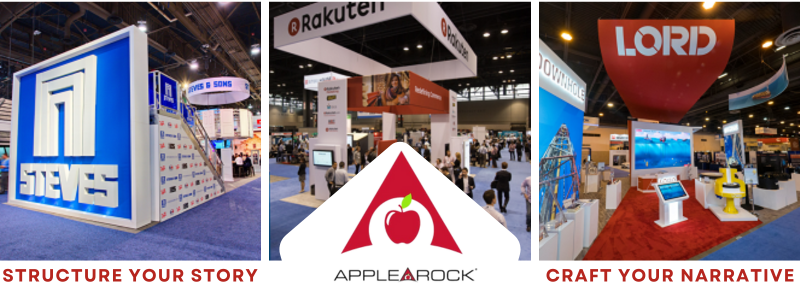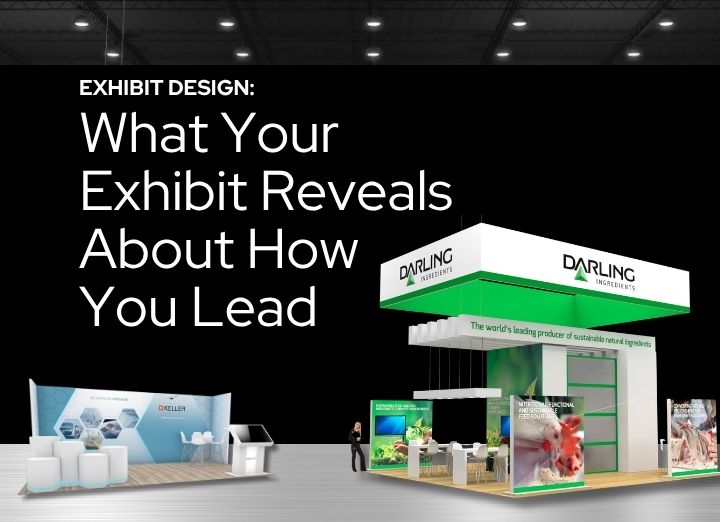The Psychological Pull of a Good Story
At its core, storytelling is a deeply human experience, rooted in our innate desire to connect, understand, and feel. Psychologists have long emphasized the role of narrative in shaping our understanding of the world. A well-crafted story can activate the brain in a way that facts only cannot, engaging not just the language-processing parts but also areas responsible for sensory experiences and emotions. When attendees encounter a story, they’re not just processing information; they’re living it.
The science of storytelling in exhibit design extends to multisensory engagement. Our brains are wired to remember experiences that stimulate multiple senses—sight, sound, touch, and smell. Incorporating these elements into your exhibit design can transform a passive viewer into an active participant. Imagine the difference between reading about the freshness of a newly opened coffee shop and walking into an exhibit that smells like freshly ground coffee beans. The latter is not just remembered; it’s experienced.
Using storytelling elements in an exhibit space significantly impacts both the atmosphere of the space and the visitor experience. Storytelling transforms a static display into an immersive narrative journey, engaging visitors on a deeper emotional level and making the content more memorable.
How Storytelling Can Influence an Exhibit Space:
Creates Emotional Connections:
Storytelling evokes emotions, making experiences more personal and impactful. When visitors encounter a story that resonates with them, they are more likely to form a lasting connection with the brand or message being presented. Emotional engagement is a powerful tool in creating brand loyalty and advocacy.
Enhances Memorability:
Stories are more easily remembered than facts or data. By integrating storytelling elements into an exhibit, you make the information presented more likely to be retained by visitors. This is especially important in a trade show environment where attendees are bombarded with information from numerous exhibits.
Encourages Active Participation:
A well-told story invites visitors to become part of the plot. Interactive elements that allow visitors to influence how the story unfolds can turn a viewing experience into an active engagement, making the visit more engaging and enjoyable.
Provides Context and Meaning:
Storytelling helps to frame the exhibit’s content within a broader narrative, giving visitors context and enhancing their understanding of the products, services, or concepts being showcased. This context can make complex information more accessible and relatable.
Differentiates the Brand:
In a crowded trade show, a unique story can set an exhibit apart from competitors. Storytelling elements that highlight a brand’s heritage, values, or innovation journey can differentiate it in the minds of visitors, making the exhibit—and by extension, the brand—more distinctive.
Facilitates a Journey:
A story has a beginning, middle, and end. Designing an exhibit space to follow this narrative structure can guide visitors through a physical and conceptual journey. This structured approach to spatial design ensures that key messages are delivered in a logical and impactful sequence.
Transforms the Space:
Storytelling can transform a physical space into a world of its own. Through the use of thematic elements, visuals, lighting, and sound, an exhibit can transport visitors to different places or times, making the experience more immersive and engaging.
Builds Community:
Shared stories have the power to build a sense of community among visitors. When people see their experiences or aspirations reflected in a narrative, they feel a connection not only to the brand but also to other visitors who share those experiences or aspirations.
Integrating storytelling into exhibit design requires careful planning and creativity, but the rewards are substantial. A space infused with narrative elements can captivate attention, engage emotions, and leave a lasting impression long after the trade show has ended.
Structuring Your Story:
The effectiveness of storytelling also lies in its structure. A clear narrative arc, with a beginning, middle, and end, helps guide visitors through the exhibit in a logical and engaging manner. This structure can mirror the hero’s journey, inviting attendees to embark on an adventure, face challenges (or learn about the challenges your product solves), and emerge transformed or enlightened.
Crafting Your Narrative:
How do you begin weaving science-backed storytelling into your exhibit design? Start with the message you want to convey, the emotions you aim to evoke, and the actions you hope to inspire. From there, consider how your design can engage the senses, foster an emotional connection, and provide a clear, compelling narrative journey. Whether through innovative use of technology, thoughtful layout, or engaging content, the goal is to transform your exhibit from a space to a story.
12 Unique Storytelling Angles to Help Craft Your Narrative
1. THEMED ENVIRONMENTS:
Create a booth design that transports visitors to a different place or time, immersing them in a themed environment that tells the story of your brand or product. For example, a beach theme for a summer product line, complete with sand-like flooring and a backdrop of waves, can evoke the feeling of being seaside.
2. INTERACTIVE STORY WALLS:
Use digital screens or physical panels where visitors can scroll or walk through a timeline of your company’s history, key milestones, or the development process of a product. Incorporate touchscreens for an interactive experience, allowing visitors to dive deeper into parts of the story that interest them.
3. NARRAVTIVE AUDIO GUIDES:
Provide headphones or a mobile app that plays audio narratives guiding visitors through the booth, explaining the significance of each section and how it contributes to the overall story of the brand or product. Bonus points if you offer the audio in multiple languages that are relevant to your audience.
4. PRODUCT JOURNEY MAPS:
Display the journey of your product from concept to completion in a visual and engaging way. Use diagrams, sketches, and photos to tell the story of innovation, challenges overcome, and the impact of the final product.
5. LIVE DEMONSTRATIONS AND PERFORMANCES:
Schedule live demonstrations or performances that tell a story related to your product or brand. This could be a cooking demo for a food product, showing the journey from ingredients to final dish, or a live art creation for a design tool.
6. IMMERSIVE VIDEO INSTALLATIONS:
Use large, wrap-around screens to show videos that tell your brand’s story or demonstrate your product in action. Immersive visuals can capture attention and convey complex information in an engaging way.
7. TIME TRAVEL JOURNEY:
Design your exhibit to take visitors on a time travel journey, showcasing the evolution of your product or industry. Use historical milestones as backdrops and highlight how your company has been a key player or innovator throughout the years. For the annual Christkindlmarkt in Carmel, Indiana this meant visually highlighting ten German Christmas traditions that have transitioned to the United States over the years.
8. BEHIND-THE-SCENES GLIMPSE:
Offer a behind-the-scenes look at your company’s creative process, from initial sketches and prototypes to the final product. Use videos, interactive displays, and physical artifacts to tell the story of your product’s journey from concept to market.
9. INTERACTIVE STORY MAPS:
Create an interactive story map that guides visitors through key points of your brand narrative or the impact of your services. Incorporate touch screens or augmented reality for an engaging, tech-forward experience.
10. CUSTOMER SUCCESS CHRONICLES:
Share stories of how your products or services have transformed the lives or businesses of your customers. Use testimonials, case studies, and before-and-after scenarios to illustrate these successes vividly.
11. INNOVATION LAB:
Present your exhibit as an innovation lab, where visitors can see new technologies or prototypes in action. Use this space to tell the story of how your company is pushing boundaries and shaping the future.
12. ART GALLERY STYLE:
Treat your products as works of art by creating an exhibit that mimics an art gallery. Each piece can be accompanied by a narrative explaining its design, function, and impact, allowing visitors to appreciate the craftsmanship and story behind it.
The science of storytelling in exhibit design is a powerful tool, capable of transforming ordinary exhibits into extraordinary, memorable experiences. By understanding and applying the principles behind what makes stories resonate, you can design exhibits that not only stand out but also leave a lasting impact on your audience. Behind every successful exhibit is a story waiting to be told. What will yours be?









